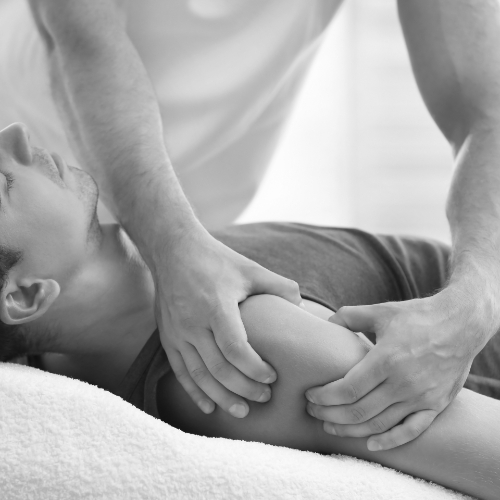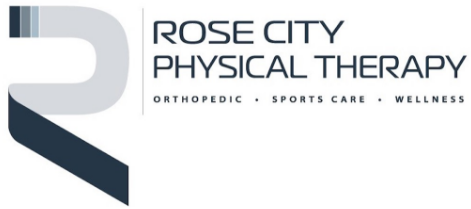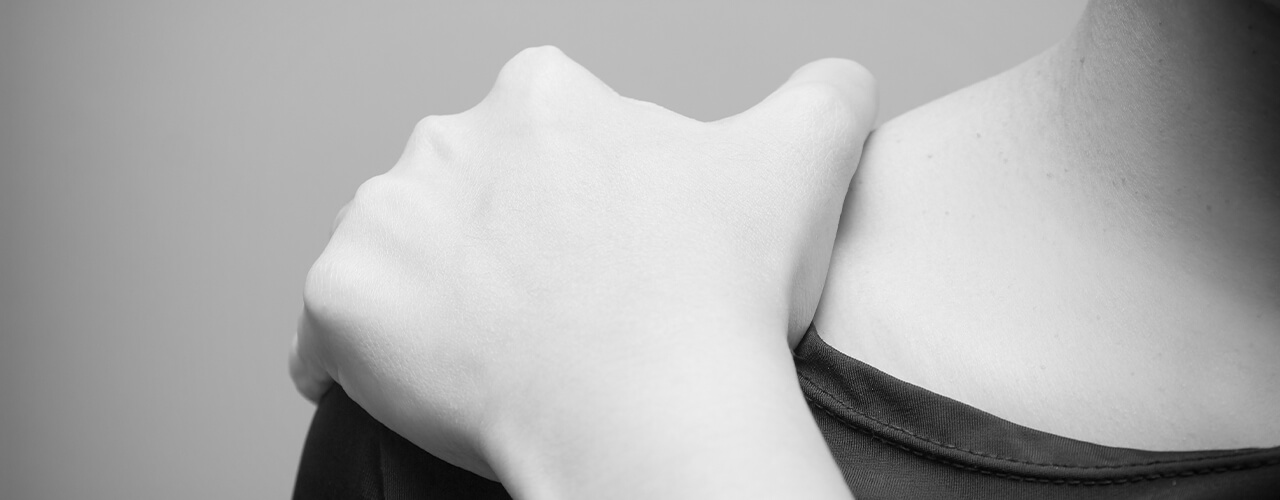
Is Shoulder Pain Interfering with Your Quality of Life? Relief Is Closer Than You Think
Physical Therapy For Shoulder Pain Provides Long-Lasting Relief
Shoulder pain is quite common and affects most people at least once during their lifetime. Shoulder pain can be felt at any time, such as when reaching high into a cupboard or to a shelf, reaching to grab the seatbelt or into the backseat of the car, throwing a ball for your dog to fetch, or swimming laps. Once shoulder pain occurs, it almost always is felt at night when sleeping or trying to find a comfortable position to sleep in without feeling a dull aching pain in your shoulder and neck.
It can manifest as a result of an injury; either a one time event or repetitive overuse, leaving you feeling as if your shoulder is useless or immobile. There are several reasons why someone may experience shoulder pain; the severity of which can range from the temporary discomfort of a pulled (strained) muscle, to a rotator cuff tear or labrum tear, to the agonizing bone-on-bone friction from arthritis.
Whatever the case may be with your shoulder pain condition, know that Rose City Physical Therapy in Portland, OR is dedicated to providing you with natural pain management and activity recovery modalities including education, exercise, functional movement and manual therapy. Contact us to make an appointment with us today!
Where did my shoulder pain come from?
The shoulder girdle is complex and is the most mobile system in the body This presents many opportunities for pain-causing conditions. It is primarily made up of four different joints: the SC (sternoclavicular), AC (acromioclavicular), GH (glenohumeral) and the scapulothoracic joints. Also important to shoulder girdle function is good posture and mobility through the thoracic spine, head-on-neck (cervical spine) alignment and motion, and core strength and stability. There are 17 muscles that attach to each shoulder blade (scapula) alone and these muscles have to work in a precise and predictable pattern for proper shoulder girdle function.
Special considerations are necessary for the overhead athlete, including the likes of the swimmer, tennis player, rock climber and baseball pitcher. One of the specialty programs at Rose City Physical Therapy is for the overhead athlete. We offer a comprehensive pre-participation screening program to find deficits in mobility, flexibility and strength, and define corrective exercises to restore balance to the shoulder in the overhead athlete to minimize in-season injury risk. If injury does occur, our shoulder specialist physical therapists are here to get you strong, stretched and stable and back in the game.
Watch This Patient Success Story | Rotator Cuff Post-Op Recovery with Physical Therapy
Some of the most common causes of shoulder pain include:
Impingement
Impingement really is a waste basket term. It refers to irritation or inflammation to tissue that lies above the head of the humerus (the ball, of the ball-and-socket joint) and the underside of the acromion, a shelf-like projection of the scapula. This space is referred to as the subacromial space. In this space exists rotator cuff tendons, the bicep long head tendon, bursa, joint capsule and ligaments. Any of these structures are susceptible to compression in the subacromial space, which can lead to injury. And once inflamed, it can be quite painful and limiting.
‘Impingement’ can happen as a result of abnormal movement and tracking of the humeral head (the ball) on the glenoid (the socket) which leads to decreased space in the subacromial space as you lift your arm overhead.
Arthritis
Arthritis is quite common and can affect anyone at any age. The two main forms of arthritis that affect the shoulder are rheumatoid arthritis and osteoarthritis. Rheumatoid arthritis, an autoimmune disease, occurs when the immune system attacks the inner membrane of the capsule surrounding the shoulder joint, resulting in pain and inflammation. Osteoarthritis – the ‘wear-and-tear’ arthritis – occurs when the cartilage on the joint surface in the shoulder joint undergoes degeneration. This occurs normally as we age, but in some people it advances to a level that it becomes painful and limiting. An injury or excessive overuse and inflammation at the shoulder can eventually lead to arthritis also. Both of these conditions can result in a painful loss of mobility, weakness to the shoulder muscles, and difficulty performing normal daily tasks.
Adhesive Capsulitis (Frozen Shoulder)
Frozen shoulder, a lay term for a condition is also known as “Adhesive Capsulitis” has multiple causes. There are two main classifications of adhesive capsulitis: Primary (or Insidious) and Secondary. Frozen shoulder results in a painful loss of motion in the shoulder with a tightening of the shoulder joint that severely limits motion.
Primary frozen shoulder isn’t fully understood and occurs unrelated to an injury, overuse, surgery or immobilization. It is most common in the peri- and post-menopausal female and research does report correlations to hormonal imbalances also exist. Women from the ages of 40 to 60 tend to experience this condition more than men, and some ethnicities are more predisposed to than others as well. There is also a higher rate of Primary Adhesive Capsulitis in the diabetic person, especially if insulin dependent. This class of frozen shoulder limits all directions of motion at the shoulder joint and can be quite debilitating and take a long time to get better.
Secondary frozen shoulder can occur after injury, or if you have been immobile for a period of time such as wearing a sling after injury or surgery. This type tends not to limit all directions of shoulder mobility like Primary frozen shoulder does.
Understanding and identifying the two classifications of ‘Frozen Shoulder’, and the stages of development are important for successful treatment with physical therapy. That which our shoulder specialists at Rose City Physical Therapy are versed in identifying and treating successfully.
Tendinitis and Tendinopathy
Tendon injury at the shoulder most commonly involves the rotator cuff and bicep long head. Tendinitis is less commonly referenced any longer as research supports that there in fact is little to no inflammation in an acutely injured tendon. Hence, it is more common to now refer to an injured tendon as tendinopathy.
When the shoulder joint is overused excessively, tendon injury can occur. It’s typically due to the demands of a laborious job, overhead activity, or sport. Furthermore, poor posture can also be a contributing factor as it alters the biomechanics at the shoulder complex and normal muscular forces on the tendons. Less common, but still one to assess for in a physical therapy evaluation, is the possible contribution to shoulder pain and tendinopathy due to a problem stemming from the cervical spine.
Rotator Cuff Tear
The rotator cuff consists of four different muscles that are designed to guide precise movement of the ball on the socket and keep it centered in the joint. If you experience an injury to the shoulder, have poor posture, or overuse your shoulder incorrectly, your rotator cuff can get injured and result in a partial or completely tear. Depending on the severity of the rotator cuff injury, you may need surgery. However, research supports that most people with a partial and some even with a full thickness tear of the rotator cuff do well with physical therapy and never have to have surgery. Our physical therapy shoulder specialists at Rose City Physical Therapy can drastically help reduce pain, restore range of motion and strength to the rotator cuff to get you back to function and avoid potential surgery.
See How Rose City Physical Therapy Has Helped Others Find Shoulder Pain Relief With Physical Therapy.
How does shoulder pain happen?
Your shoulder girdle is a very complex part of your body. It is capable of accomplishing many physical tasks, and also has the greatest range of all the joints you have! What people often think of as the shoulder per se is the glenohumeral joint which is a “ball-and-socket” joint, meaning the head – the ball – of the upper arm bone, or humerus, fits perfectly in the corresponding space – the socket – within the shoulder blade or scapula. The ends of the bone are protected by a thick layer of smooth cartilage which allows optimal motion while protecting the bones from rubbing together.
The shoulder however is not just the ball-and-socket joint. It is complex and is the most mobile system in the body. As mentioned above, it consists of four different joints: the SC (sternoclavicular), AC (acromioclavicular), GH (glenohumeral) and the scapulothoracic joints. Also related to optimal shoulder mobility and function is posture and mobility through the cervical (neck) and thoracic (mid back) spine, and core strength and stability.
It is often a strength imbalance or tightness in one or more of the many muscles that act on the shoulder, or stiffness and lack of mobility in the joints of the shoulder girdle complex or adjacent loss of spine mobility that predisposes one to pain and injury. Many shoulder problems are a result of repetitive overuse and overload. If the intricacies that make up the biomechanical interplay of the shoulder are off, pain can be a lasting result unless physical therapy treatment is sought out.
Fluid-filled sacs called “bursa” are also present throughout the shoulder girdle complex. There are 5 main bursa at the shoulder, but other smaller bursa exist as well; the latter which rarely become painful. Bursa facilitate smooth motion and reduce friction at tendon-tendon and bone-tendon interfaces. If imbalances exist at the shoulder and offset smooth motion, the bursa can become irritated, inflamed and very painful; a process known as bursitis.
The type and intensity of pain you feel in your shoulder can vary, depending on what is causing it. Pain from “impingement” for example, occurs at the limits of motion when structures are getting ‘impinged’ between two boney surfaces. Pain resulting from a degenerated shoulder may create persistent stiffness and constant aches every time you move your arm in certain directions. Acute injuries can result in sudden and intense pains that make it next to impossible to even move your shoulder.
Or skilled and attentive physical therapists at Rose City Physical Therapy in Portland, OR know exactly how to treat these sources of pain and will have you back into your normal routine in no time.
Contact Our Office Today For More Information
Physical therapy is a natural, non-invasive, and comfortable way to find relief for shoulder pain, without the need for harmful drugs or invasive surgery. Our Portland, OR physical therapists, some with over 20 years of experience, have treated pretty much any shoulder pain or condition that exists, and we find that our patients experience improvement and relief after just a few short sessions with us.
Our physical therapists at Rose City Physical Therapy are trained movement experts when it comes to pinpointing the cause of your pain through a variety of diagnostic techniques. During your evaluation, your therapist will examine your range of motion, strength, functional mobility, coordination, and joint mobility. Once he or she has established the cause of your shoulder pain, they can create a customized treatment using different physical therapy methods to relieve or eliminate your pain. Don’t let your shoulder pain control your life! Our physical therapy practice will get you the help you need to go back to your daily routine once again. Contact Rose City Physical Therapy today at Portland, OR to request your appointment and get started on your path toward full shoulder pain-relief.
Your Next Steps…
Request An Appointment
Receive A Custom Treatment Plan
Work Hard and Progress In Your Recovery
Recover & Enjoy Life Pain-Free!


